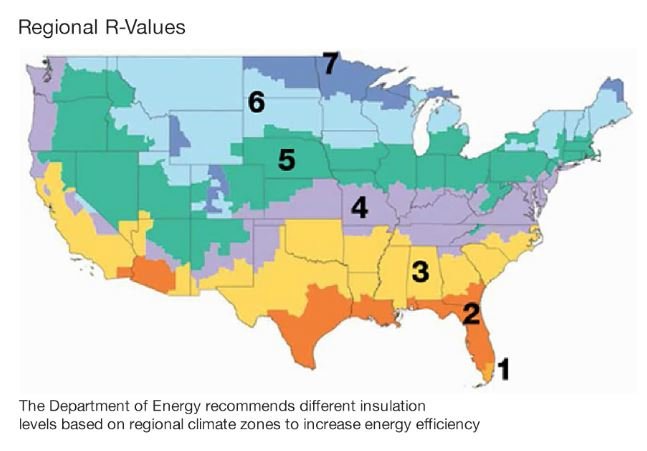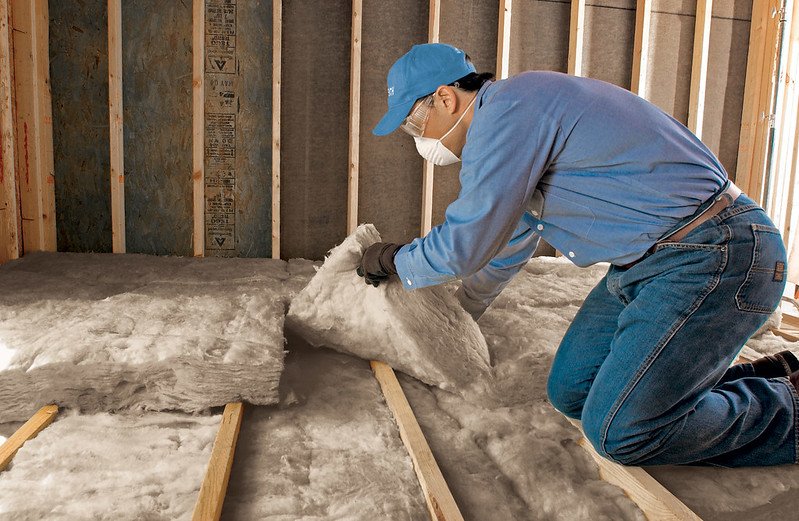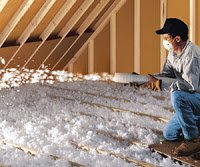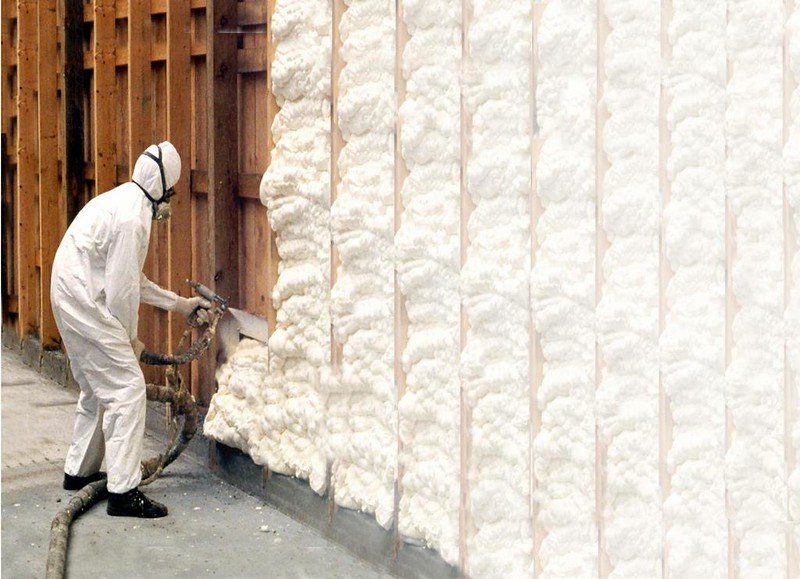By the way… any links on this page that lead to products on Amazon and other companies are affiliate links and I earn a commission if you make a purchase. Thanks in advance for your support!
One of the questions I see regularly in researching garages and carports is “Should I insulate my garage”? My own garage is currently uninsulated, but as I use it for a range of activities in Summer and Winter, I thought I’d look into insulation in a bit more detail. One particular thing I found seemed obvious, but I had failed to do it. Find out more by reading on below…
The short answer is, yes, insulate your garage, but do it in a way which is cost effective using insulation appropriate to your garage, and to your budget. The pros definitely outweigh the cons. The choice of readily available insulation includes Fiberglass, Cellulose, Mineral Wool, and Foam.
- The Pros Of Insulating Your Garage
- The Cons of Insulating Your Garage
- Ensure You Do This Before Anything Else!
- The “R” Value – What Does It Mean and Why IS It Important?
- Types of Garage Insulation
- What Type Of Insulation Should I Use For My Garage?
- How Much Insulation Do I Need?
- How Do I Insulate My Garage?
- Should I Insulate My Detached Garage?
- Does Insulating a Garage Door Make a Difference?
- How Do I Insulate My Garage Door?
- Final Thoughts
The Pros Of Insulating Your Garage
- Use your garage all year round
If you insulate your garage, you can use it all year round. A lot of people use their garage as more than just a place to store their cars and camping equipment. If you use your garage as a workshop, gym, or laundry
room, insulation will ensure that you are able to work out in the garage all year round- no matter what the temperature is outside.
- Reduces heating bills
If you’re heating your garage, insulating it will help to keep the costs of heating down, whilst at the same time helping to save the planet.
- Insulates your home too
If your garage is attached to your home, every time you open the door to your house through the garage, you are letting cold or hot air into your home. This causes your heat and air conditioning systems to have work harder to maintain the desired temperature in your home. Insulation will moderate these temperature differences.
An insulated attached garage will also keep your home warmer, as it will stop heat radiating from the party wall between the house and garage.
- Room over the garage? Keep it warm or cool by insulating the garage
If there is a room above your garage, that room will subjected to whatever temperatures are in the garage, making it even colder or warmer than necessary.
- Services (Pipes etc) which run through the garage will be protected from frost
If you have any pipes in your garage (for example, pipes that lead to the laundry room from the garage), insulation will protect the pipes which will help to prevent them from freezing and possibly even bursting.
- Big temperature changes can be moderated
Big temperature changes can damage items that you are storing in your garage (from cars and tools, to holiday decorations and collectables), particularly if the temperature dips down below freezing. Insulation helps to smooth out those fluctuations and most importantly help to keep objects from freezing.
- Damp conditions are more likely to be minimized
I’ve written elsewhere about the ideal temperature to keep your garage at, and it’s important to ensure that the temperature in your garage doesn’t dip below the local area’s dew point – ie the temperature at which condensation starts to form on objects such as tools and equipment – and of course your car.
Insulation will help to keep the temperature up, and the garage warm enough to keep condensation at bay.
- Insulation will reduce noise
An insulated garage means more noise control. This is good for the rest of the family if your band is practicing in the garage or if you are using power tools in there.
It will equally reduce any sound coming in from the outside – such as a noisy trunk road on your doorstep.
The Cons of Insulating Your Garage
- Cost
The cost of insulating your garage can vary widely, depending on the size of the garage and the material used. It really is the only argument against insulating your garage though, and this cost can be largely mitigated by the savings in heating, and air conditioning over the longer term.
Take a look below at the various types of insulation available to get an idea of the costs of insulating your garage.
Ensure You Do This Before Anything Else!
However, before you go the trouble and expense of insulating your garage, make sure you fill cracks and gaps in the walls, windows and doors, and wherever possible weatherstrip doors and windows. For a small outlay, you’ll save a bunch of money by stopping cold or warm drafts.
The “R” Value – What Does It Mean and Why IS It Important?
In considering various types of insulation for your garage you’re sure to come across the R value. The R value is a measure given to insulation to illustrate how effective at insulating it is. It measures how resistant types of insulation are to heat loss. The higher the R value, the better the insulation. It’s important as it allows you to compare different types of insulation, and see which is the most effective.

The Department of Energy in the US recommends different insulation levels and R values based on your region to increase energy efficiency – this can be seen in detail at Ref 1 at the end of this article.
But what choice do you have when insulating your garage? here are the various types:
Types of Garage Insulation
Fiberglass Insulation
Fiberglass insulation comes in three forms – as rolls or pre-cut slabs, as loose fill or as Batts (pre-formed boards). It’s probably the cheapest and easiest insulation to use in a DIY project.
Fiberglass roll insulation is best used on horizontal surfaces, such as lofts over garages, where it can be simply laid between roof joists with no fixing required. It is important not to compress fiberglass roll insulation because it will lose some of its insulating effectiveness.
It can also be used on garage walls and door if they are unfinished, followed by enclosing it with drywall on top. Batts are simpler and easier to install on vertical surfaces such as walls, using a staple gun to pin it to a dryliner surface against the brick or metal of the garage wall.
Fibreglass fill is best used on loft floors between joists, and blown into cavities in completed walls.
Ensure you wear a mask and protective eye and hand covering, as fiberglass can be an irritant.
Fiberglass batt insulation usually comes in thicknesses of 3.5 – 12 inches, with an R value of between 13 to 30, and a cost between $0.20 to $1 per sq. ft. (costs correct at time of writing and include both labor and material costs – check with a local contractor). (Ref 1).
Cellulose & Mineral Wool
Cellulose insulation is usually made from recycled paper. It is laid loose between joists.
Mineral wool goes under the guise of rock wool which is a man-made material made from a combination of natural minerals, or slag wool which is made from slag, a waste product of molten metal. Both of these are naturally fire-resistant. They come as rolls, batts or loose-fill.
Loose fill such as cellulose, and mineral wool (8 – 23 inches thick) have R values between 30 and 50 (so are better insulators than thinner fiberglass rolls). Costs range from $0.45 to $2.25 per sq. ft (Ref 1).
Foam
Foam insulation can be made from a variety of plastics, including polystyrene (Styrofoam) and polyurethane, or from cement. Foam insulations can be sprayed or installed in rigid foamboards. Polyurethane foam expands to fill gaps and then hardens to form a rigid seal.
R values for foam fill tend to be higher than for fiberglass, but start at 6.5 for 1 inch of foam, and for foam board are around 5 per inch. Costs range from $0.20 for foam board to $2.50 for sprayed foam (Ref 1).
Reflective Insulation
Reflective insulation is made from a reflective material such as aluminum foil over a foam board. It is designed to keep the garage or home cool by the minimizing heat penetration from the outside, and is most suitable for hot regions.
As most of the heat enters through the ceiling, this insulation is best placed on the loft floor, though it is often used on walls and garage doors as well.
What Type Of Insulation Should I Use For My Garage?
So I’ve now decided to insulate my garage, but what type of insulation should I use?
This all depends on your budget, and whether you’re going to tackle insulating your garage as a DIY project, or you’re going to get the professionals in.
You may find this easier to decide when you consider how the insulation is supplied for installation. For the relative costs, see above.
Batts

These are flexible sections of fiberglass or mineral wool which are relatively easy to put on walls, and even ceilings, so are more suited to DIY projects. They are available with or without aluminum foil facing which helps prevent interior heat from escaping.
Image: AKA Insulation
However, they’re probably not ideal for walls which have a finished surface, unless you’re going to re-cover them with another type of board. Batts are most suitable for unfinished walls and lofts, where they can be laid on unfinished surfaces.
Batts are relatively cheap and easy to install.
Fiberglass Rolls

These rolls, in lengths of between 20 ft and 40 ft, are designed more for horizontal insulation jobs like lofts and ceilings. They are easy for a competent DIYer to use and are very economic, particularly given their high insulation R values.
Blown-In Insulation

Blown-in, or loose fill insulation, usually consists of fiberglass, cellulose or mineral wool particles, blown into the desired space by special equipment.
Image Southland Insulators
It’s often used in loft spaces or cavity walls, and whilst relatively quick to install, requires some specialist knowledge, so maybe not so ideal for the DIY brigade.
It’s not really suitable for unfinished walls or ceilings, but can be used for the loft space over the garage, between the joists.
It is relatively more expensive than fiberglass rolls.
Foam Boards
Foam boards are rigid sections of foam which are easily cut to fit spaces and are best used on unfinished walls and ceilings, or between rafters in the loft. More expensive than fiberglass, but easy to install by the DIYer and tend to have a higher R value.
Foam Fill

For larger areas, and for sealed wall cavities, foam is pumped in with special equipment, so it’s probably best to leave this to the professionals (though the machines can be hired if you know what you’re doing). Image: dunktanktechnician
For smaller jobs, and filling cracks, cans of foam can be bought from your local hardware store. This is good stuff if you have small, drafty openings around doors and windows, and in the walls and ceiling of your garage. it can be trimmed and painted when hardened.
Radiant Boards
These are a form of reflective insulation used in hot regions to keep the garage and home cool. They come as pre-formed boards and are relatively easy to install.
How Much Insulation Do I Need?
The amount of insulation you’ll need for your garage will depend on a number of factors, including where you live, the amount of insulation you already have (if any), and what sort of heating or cooling you have in your garage.
Also, you may want to keep your garage warmer, or cooler, than average, which will help to determine the thickness of the insulation required.
To help you work all this out, The Home Depot provides a helpful calculator. The link for this can be found at Ref 2, at the end of this article.
How Do I Insulate My Garage?
Here’s a video explaining how one DIYer used foam batts to insulate his garage wall:
Should I Insulate My Detached Garage?
Whilst it’s good practice to insulate at least the party (or common) wall of an attached garage with your home – so that heat doesn’t easily leak out of the house into the colder garage (or into the home in warmer climes) – it’s not always sensible to insulate a detached garage.
The deciding factor will be what you want to use it for. If it’s just parking the car, then it may not be a great idea to keep the car warm. If, however, you use it as a workshop or gym, you’ll no doubt want to keep it at a comfortable temperature, and therefore insulation would be a good thing.
Here’s one garage owner who’s convinced it’s worth insulating your detached garage:
Yes, insulation is always worth doing no matter if you heat the garage or not. My detatched garage is well insulated. In the summer, it stays 20 or more degrees below outside temperature just by keeping the doors closed. In the winter, the garage stays 30-40 degrees above outside temperature with no heat added. There is enough ground heat rising through the slab to heat it that much and the insulation holds the heat in the garage.
The Garage Journal forum
Does Insulating a Garage Door Make a Difference?
Insulating your garage door very much depends on the number of times it’s opened and closed. Every time this happens, most of the stored heat (or cooled air in hot regions) disappears into the ether. In these circumstances, insulating the garage door will not yield benefits.
However, for most normal door usage it may well be worth it, particularly if you spend a lot of time in there.
If you decide to go ahead with insulating the garage door, consider buying a new door with an insulated core. This will last you longer and be more efficient. Garage door manufacturers say that an R18 insulated garage door could keep the garage 12 degrees warmer in winter and 25 degrees cooler in summer – but at a cost. It could be up to $2,000 for a new double garage door, and unless you actually need to replace your old one, it may be best to achieve a similar level of insulation by adding styrofoam, sprayed foam, or fiberglass batts, to your existing door.
How Do I Insulate My Garage Door?
So, how do you insulate your existing door? Here’s a short, really helpful video by a DIYer who tackled this job:
Want to know what temperature you should keep your garage at? Check this.
Final Thoughts
Well, on the basis of my research, I’ve no doubt that I need to insulate my garage, and as I’ll be doing the job myself, I’m probably going to choose the DIY friendly fiberglass batts to pin to the walls, with fiberglass rolls on the ceiling.
Before I start any of that, though, I’m going to be making sure that all the gaps and cracks in the wall (of which I have quite a few) are filled with a can of expanding foam, and my door and windows are weather-sealed with strip – it’s an easy win!
Image credit Rick Obst

